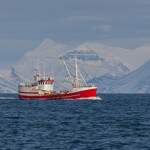Groundfish Forum predicts wild-caught whitefish supplies will remain flat in 2024

The International Groundfish Forum, an organization representing the global groundfish sector, is predicting the global supply of wild-caught whitefish will remain flat in 2024 as some species see gains while others see big drops.
The forum, which met in Athens, Greece in October, predicted that the total supply of wild-caught whitefish would be 7.042 million metric tons (MT), down just 1,000 MT from the 7.043 million MT available in 2023. The slight decrease still represents a higher supply than 2022, when the industry had 6.938 million MT to work with.
While overall supply will remain flat, the forum predicted some fisheries will sustain large drops, while others will gain volume.
Alaska pollock, the largest wild-caught whitefish species by volume, will see a big increase in available catch in 2024 compared to 2023. Across the major sources of the species, the Groundfish Forum is projecting the supply in 2024 will sit at just under 3.8 million MT, up from the 3.7 million MT available in 2023.
The main source of the increase is a bump in Russia’s available supply, from 1.95 million MT in 2023 to 2.05 million MT in 2024. The U.S. and Canada will also enjoy a slight increase in supply, going from 1.49 million MT available in 2023 to 1.495 million MT in 2024.
The second-largest species by volume, the various hake species, will undergo a slight decrease in available volume. In 2023, across the many different countries and regions catching a species of hake, the supply was 1.114 million MT. This year, the supply will be 1.105 million MT, a decrease of 9,000 MT.
Most regions catching hake will see the same amount of fish in 2024 as 2023, except for the region including the E.U., U.K., and Norway, which will see a drop from 81,000 MT to 73,000 MT, accounting for most of the decline.
The third-largest species by volume, Atlantic cod, will bear the largest drop in available supply in 2024. Its available catch will decrease from 921,000 MT in 2023 to just 791,000 MT in 2024, a drop of 130,000 MT, or a 14 percent decrease.
In 2023, catches also declined compared to the previous year. Between 2022 and 2024, the catch will likely go from 1.08 million MT of available Atlantic cod to the predicted 791,000 MT, a drop of 290,000 MT or 26.8 percent.
Drops in catch in Norway, Russia, and Iceland will result in lower global supply of cod compared to 2022. All three countries will undergo decreases in catch, with Norway seeing the largest drop from 355,000 MT available in 2022 to 216,000 MT available in 2024, a 39 percent decline. Russia's total will fall from 333,000 MT in 2022 to 215,000 MT in 2024, a 35 percent drop.
The next-largest species by volume, saithe, will increase in supply. The forum predicts there will be 382,000 MT available in 2024, up from 368,000 MT available in 2023.
Catches of Pacific cod, like Atlantic cod, are also trending downward. The forum predicts there will be 329,000 MT available in 2024, down from 336,000 MT available in 2023.
Catches of haddock, the next largest species by volume on the list, are also declining, with 267,000 MT available in 2024, down from 280,000 MT in 2023.
Atlantic redfish, the next largest, will increase from 153,000 MT in 2023 to 172,000 MT available in 2024.
Hoki, the second-smallest commercial whitefish species in volume terms, will go from 141,000 MT in available volume in 2023 to 157,000 MT in 2024.
Southern blue whiting, caught in New Zealand, Argentina, and Chile, will be available in larger volumes year-over-year – from 39,000 MT in 2023 to 43,000 MT in 2024.
By region, the North Atlantic region will suffer the biggest decrease in available wild-caught whitefish, dropping from 1.803 million MT in 2023 to 1.685 million MT in 2024. The North Pacific Region will see a bump from 4.301 million MT in 2023 to 4.399 million MT in 2024, with much of the increase coming from the increase in supply of Alaska pollock.
The supply of farmed whitefish, meanwhile, is trending up by volume. The supply of pangasius and other catfish in 2024 will be 3.96 million MT, up from 3.87 million MT in 2023, the forum predicted. The increase mainly stems from increased production in Asia, where Vietnam, India, Bangladesh, Indonesia, and China are all predicted to increase their supplies.
Photo courtesy of the International Groundfish Forum






Share